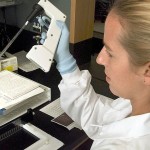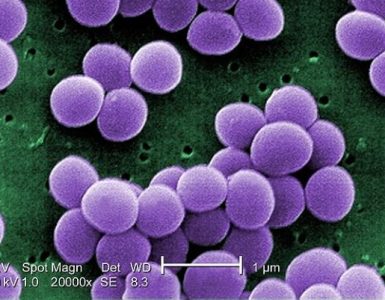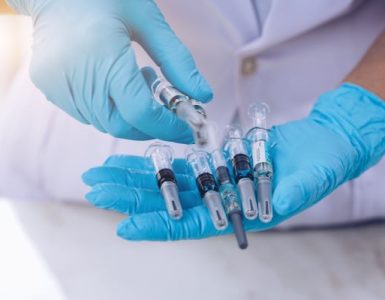 Researchers have known that two seemingly distant human maladies—a devastating set of hereditary disorders called Walker-Warburg syndrome and infection with the virus that causes hemorrhagic Lassa fever—both involve a cellular protein involving sugar.
Researchers have known that two seemingly distant human maladies—a devastating set of hereditary disorders called Walker-Warburg syndrome and infection with the virus that causes hemorrhagic Lassa fever—both involve a cellular protein involving sugar.
Now an international team has discovered new genetic mutations that cause the severe brain, muscle and eye defects found in children with Walker-Warburg syndrome but also make cells insensitive to the Lassa virus.
The scientists found all known gene defects and identified new mutations in genes critical for coupling sugar groups to a particular protein receptor for Lassa virus, called glycosylated alpha-dystroglycan. The team, which includes Sean Whelan, HMS professor of microbiology and immunobiology; Hans van Bokhoven of Radboud University Medical Center; and Thijn Brummelkamp of the Netherlands Cancer Institute, published their findings in Science.
Defects in how sugar modifies the dystroglycan complex causes Walker-Warburg syndrome, in which affected children usually die at an early age. The Lassa virus is one of many pathogens that hijacks this protein complex in order to enter cells.
Studying Lassa leads to syndrome clues
Viruses need to get inside host cells to amplify and cause disease. The Lassa virus gains entry by binding to dystroglycan, a protein complex on the outside of the cell. This protein complex is heavily decorated with sugars that anchor the cell to its surroundings. To generate a detailed map of how Lassa virus enters human cells, as well as to identify genes required for successful infection, the scientists infected a unique human cell line in a lab dish. Because these genes are present only in a single copy, they can be readily inactivated. Until recently this genetic trick was possible only in model organisms, such as yeast and fruit flies.
Using the genetic approach of inactivating host gene function by inserting new genetic material, a technique called insertional mutagenesis, the team found human cells that were resistant to Lassa virus infection. The scientists were able to do the Lassa work safely by replacing the surface protein on another non-lethal virus with the surface protein of Lassa and then testing the ability of that virus to infect and kill the haploid cell-line in which genes had been inactivated by insertional mutagenesis. Only those cells that lacked the components essential for Lassa virus entry survived the infection, whereas others died.
Walker-Warburg mutations identified
The identity of the genes associated with resistance was revealed by deep genetic sequencing of the surviving cells. Among them were genes that encode the known Lassa virus receptor alpha-dystroglycan as well as machinery required to add sugars to this receptor. Mutations in several of these genes are associated with Walker-Warburg syndrome, but not all of the genes had previously been linked with the syndrome.
Based on these findings, researchers scanned the genome of Walker-Warburg patients for defects in these newly discovered genes. Strikingly, several families affected by hereditary Walker-Warburg syndrome of previously unknown cause carried mutations in these genes.
Lassa virus is endemic in regions of Africa and causes thousands of deaths every year. The researchers said it will be interesting to see if, in communities exposed to Lassa virus, the human genome shows traces of the ongoing struggle in the sections encoding the identified host factors that are involved in building the sugar trees on the dystroglycan protein.
Source: Medical Xpress

















